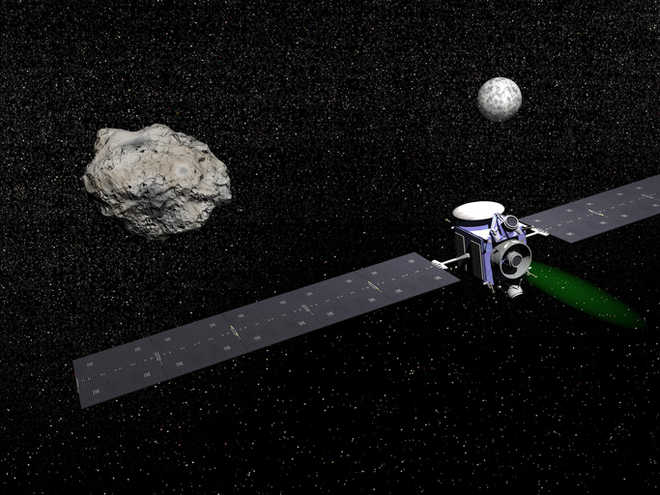Washington
NASA’s Dawn mission to Ceres has found the evidence of residual liquid left over from an ancient global ocean on the dwarf planet.
The researchers found that Ceres’ crust is a mixture of ice, salts and hydrated materials that were subjected to past and possibly recent geologic activity, and that this crust represents most of that ocean.
They suggest that there is a softer, easily deformable layer beneath Ceres’ rigid surface crust, which could be the signature of residual liquid.
“More and more, we are learning that Ceres is a complex, dynamic world that may have hosted a lot of liquid water in the past, and may still have some underground,” said Julie Castillo-Rogez, Dawn project scientist based at NASA’s Jet Propulsion Laboratory (JPL) in California.
Researchers led by Anton Ermakov, a postdoctoral researcher at JPL, used shape and gravity data measurements from the Dawn mission to determine the internal structure and composition of Ceres.
The research supports the possibility that Ceres is geologically active – if not now, then it may have been in the recent past.
Three craters — Occator, Kerwan and Yalode — and Ceres’ solitary tall mountain, Ahuna Mons, are all associated with “gravity anomalies,” researchers said.
This means discrepancies between the scientists’ models of Ceres’ gravity and what Dawn observed in these four locations can be associated with subsurface structures.
Researchers led by Roger Fu at Harvard University in the US investigated the strength and composition of Ceres’ crust and deeper interior by studying the dwarf planet’s topography.
By modelling how Ceres’ crust flows, Fu and colleagues found it is likely a mixture of ice, salts, rock and an additional component believed to be clathrate hydrate.
A clathrate hydrate is a cage of water molecules surrounding a gas molecule. This structure is 100 to 1,000 times stronger than water ice, despite having nearly the same density.
The researchers believe Ceres once had more pronounced surface features, but they have smoothed out over time.
This type of flattening of mountains and valleys requires a high-strength crust resting on a more deformable layer, which Fu and colleagues interpret to contain a little bit of liquid.




 Driving Naari Programme launched in Chandigarh
Driving Naari Programme launched in Chandigarh































